Perseid meteors: Skywatchers enjoy shower peak
- Published
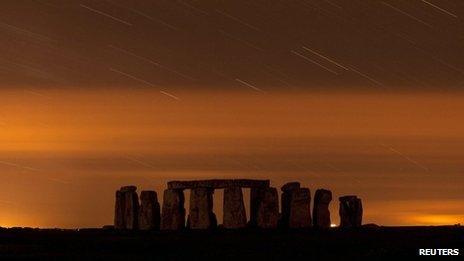
The Perseid meteor shower could be seen streaking across the sky over Stonehenge in Wiltshire
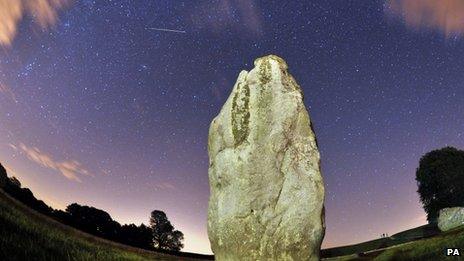
Elsewhere in the county, skywatchers also saw the meteor shower pass over the stones at Avebury's Neolithic henge monument.
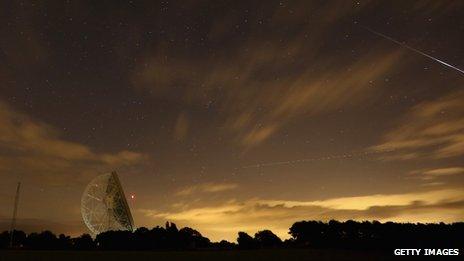
Further north, it was also spotted above the Lovell Radio Telescope at Jodrell Bank in Cheshire
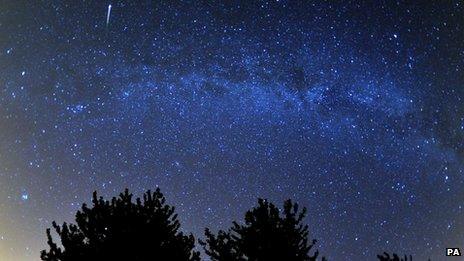
The annual display is a result of Earth's orbit passing through debris from the comet Swift-Tuttle
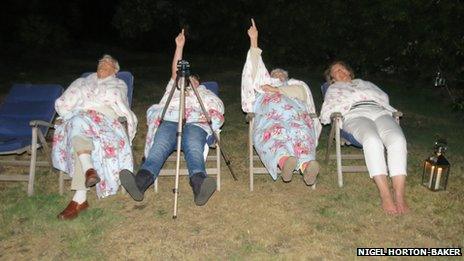
Residents in Ripley, Surrey wrapped up warm and camped out in their garden to observe the shower

Lisa Harding took 50 photos over two hours from her conservatory in Woking, Surrey to get this effect
Skygazers have seen the high point of the annual Perseid meteor shower.
The shower, which reached its peak on Monday night, occurs when the Earth passes through a stream of dusty debris from the Swift-Tuttle comet.
As this cometary "grit" strikes the atmosphere, it burns up, creating spectacular streaks of light across the night sky.
The meteors appear to come from a point called a "radiant" in the Constellation Perseus - hence the name Perseid.
The tiny fragments of ice and dust - they range in size from a grain of sand to around as big as a pea - hit the Earth's atmosphere at some 60km/s (134,000 mph).
As many as 60-100 streaks an hour may be visible at the height of the display.
Skywatchers were advised to lie on a blanket or a reclining chair to get the best view.
This picture of a Perseid meteor was captured in Newhaven, East Sussex
'Fabulous'
Comet Swift-Tuttle came relatively close to Earth in 1992, which made for an especially dramatic show. Since then, the display has calmed down.
The comet is not due to come as close to the Earth again until the middle of the next decade.
Laura, from Wiltshire, told BBC Radio 5 live that she had seen two of the meteors.
"It's literally like a streak of lightning but without the thunder that follows it. It's a very quick flash, and if you're not looking directly at it it's like you've got something going on in the corner of your eye," she said.
"But one I saw, I was looking directly at it. It was fabulous. Really bright. Streaked right across the sky."
Astronomer and science writer Dr David Whitehouse said the spectacle was breathtaking.
"The light from a shooting star is like no other type of light in the sky," he told BBC News. "It's not starlight, it's not moonlight, it's not sunlight.
"It has a ghostly sliver and a sleeting brilliance all of its own."
- Published13 August 2013
- Published10 August 2013
- Published14 December 2012